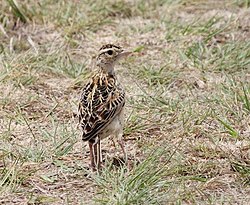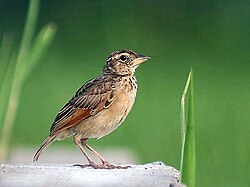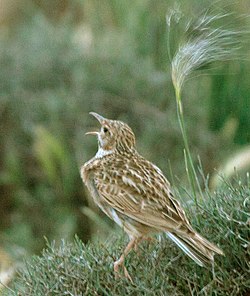| Lark | |
|---|---|
 | |
| Eurasian skylark (Alauda arvensis) | |
| Scientific classification | |
| Kingdom: | Animalia |
| Phylum: | Chordata |
| Class: | Aves |
| Order: | Passeriformes |
| Parvorder: | Sylviida |
| Family: | Alaudidae Vigors, 1825 |
| Genera | |
see text | |
Larks are passerine birds of the family Alaudidae. Larks have a cosmopolitan distribution with the largest number of species occurring in Africa. Only a single species, the horned lark, occurs in North America, and only Horsfield's bush lark occurs in Australia. Habitats vary widely, but many species live in drier regions. When the word "lark" is used without specification, it often refers to the Eurasian skylark (Alauda arvensis). [1]
























